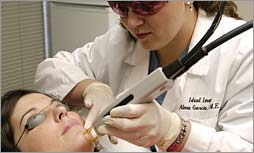Green Tea Can Help Treatment of Cancer

Consuming of Green Tea Can Help Treatment of Cancer Cancer…? What do you thing about it? Prevent it before comes !!!!!
Cancer is the of the biggest health concerns that most people is preventing cancer today. In the USA and other developed countries, cancer is presently responsible for about 25% of all deaths.
Many of our country’s deaths from cancer are completely preventable. However, there are many other cancers that we cannot prevent, in part because we don’t know what causes them. But, there may be a product already in your cupboard that can help prevent, or even treat, cancer. Green Tea…? Yeah it has a prevention against certain types of cancer.
Tea drinking is an ancient tradition dating back 5,000 years in China and India. Investigators now are studying tea for possible use in the prevention and treatment of a variety of cancers, especially interested in the antioxidants-called catechins-found in tea as powerful inhibitors of cancer growth. EGCG is one of the many catechins contained in tea.
 As the information that the human body constantly produces unstable molecules called oxidants, also commonly referred to as free radicals. To become stable, oxidants steal electrons from other molecules and damage cell proteins and genetic material. This damage may leave the cell vulnerable to cancer. Antioxidants like the catechins found in tea inhibit specific enzyme activities that lead to cancer and repair DNA aberrations caused by oxidants.
As the information that the human body constantly produces unstable molecules called oxidants, also commonly referred to as free radicals. To become stable, oxidants steal electrons from other molecules and damage cell proteins and genetic material. This damage may leave the cell vulnerable to cancer. Antioxidants like the catechins found in tea inhibit specific enzyme activities that lead to cancer and repair DNA aberrations caused by oxidants.
One study showed the leaves of a single evergreen plant, Camellia sinensis, when is consumed for about five minutes released over 80 percent of its catechins. GREEN TEA contains higher levels of antioxidants than black tea because less of processing. Fermenting the tea leaves, which is part of processing tea leaves for black tea, converts these catechins to other compounds and reduces their health benefits. Therefore, GREEN TEA, because it is not fermented, retains more of its original anti-oxidants than black tea.
In one recent study by the School of Pharmaceutical Sciences, University of Shizuoka, Japan*, research showed that green tea, when combined with the drug Adriamycin, was more effective in treating a certain kind of ovarian sarcoma (cancer of the ovaries) than using the adriamycin alone.
This is a good new, of course further research is needed.
Many of our country’s deaths from cancer are completely preventable. However, there are many other cancers that we cannot prevent, in part because we don’t know what causes them. But, there may be a product already in your cupboard that can help prevent, or even treat, cancer. Green Tea…? Yeah it has a prevention against certain types of cancer.
Tea drinking is an ancient tradition dating back 5,000 years in China and India. Investigators now are studying tea for possible use in the prevention and treatment of a variety of cancers, especially interested in the antioxidants-called catechins-found in tea as powerful inhibitors of cancer growth. EGCG is one of the many catechins contained in tea.
 As the information that the human body constantly produces unstable molecules called oxidants, also commonly referred to as free radicals. To become stable, oxidants steal electrons from other molecules and damage cell proteins and genetic material. This damage may leave the cell vulnerable to cancer. Antioxidants like the catechins found in tea inhibit specific enzyme activities that lead to cancer and repair DNA aberrations caused by oxidants.
As the information that the human body constantly produces unstable molecules called oxidants, also commonly referred to as free radicals. To become stable, oxidants steal electrons from other molecules and damage cell proteins and genetic material. This damage may leave the cell vulnerable to cancer. Antioxidants like the catechins found in tea inhibit specific enzyme activities that lead to cancer and repair DNA aberrations caused by oxidants.One study showed the leaves of a single evergreen plant, Camellia sinensis, when is consumed for about five minutes released over 80 percent of its catechins. GREEN TEA contains higher levels of antioxidants than black tea because less of processing. Fermenting the tea leaves, which is part of processing tea leaves for black tea, converts these catechins to other compounds and reduces their health benefits. Therefore, GREEN TEA, because it is not fermented, retains more of its original anti-oxidants than black tea.
In one recent study by the School of Pharmaceutical Sciences, University of Shizuoka, Japan*, research showed that green tea, when combined with the drug Adriamycin, was more effective in treating a certain kind of ovarian sarcoma (cancer of the ovaries) than using the adriamycin alone.
This is a good new, of course further research is needed.
Read more!








